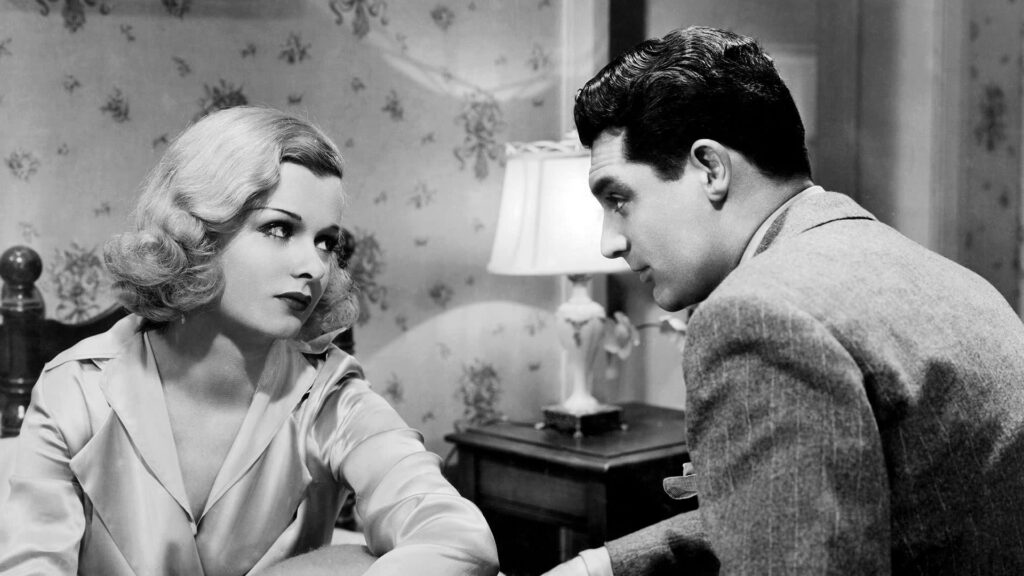
Although he’s certainly best known for having directed some of the great western and adventure pictures of the classic studio era, filmmaker Raoul Walsh nevertheless excelled in the genre of the romantic comedy. While this may seem strange, Walsh brought his own intricate sense of mise en scène to romantic comedies like Big Brown Eyes (1936). Whenever the camera is still the frame is packed with enough physical motion to imbue the film with a unique illusion of reality.
In the opening scene of Big Brown Eyes, set at a barber shop, Walsh introduces a plethora of characters that will never be seen again in a carefully choreographed scene. There are some quick cutaways but for the most part the actors move in and out of frame on their own with immaculate timing. Walsh creates a dramatic tableau out of the space and the dozen performers that is akin to the opening scene of Fritz Lang’s masterful M (1931). Where the population of Lang’s Berlin ponders the identity of a serial child murderer, the New Yorkers in Big Brown Eyes speculate as to whether some stolen jewels will be recovered.
Therein lies the plot of Big Brown Eyes. Det. Danny Barr (Cary Grant) is in hot pursuit of a gang of jewel thieves (lead by a particularly duplicitous Walter Pidgeon) with little time for his manicurist girlfriend Eve (Joan Bennett). But after a particularly grim, and typically Walsh, plot twist it is ultimately Eve who cracks Barr’s case wide open, enabling the two to carry on with their romance. As contrived as some of the plot points may be the film is sustained by Walsh’s expert direction and the performances of both Bennett and Grant.
Grant, as one might expect, is all wit and charm in his performance of police man Barr (at one point Grant pulls off a surreal scene of lip syncing). Even as Big Brown Eyes takes a darker dramatic turn Grant remains steadfastly at ease transitioning from clownish oaf to thoughtful gumshoe. But all of Grant’s on screen busy work cannot outshine Joan Bennett. Bennet possessed the uncanny ability not to transition between the comedic and dramatic but to inhabit both roles simultaneously. As evidenced by her diverse filmography, which includes Little Women (1933) and Suspiria (1977), Bennett was as versatile an actor as ever lived.
From the perspective of some eighty plus years later, one of the most enjoyable aspects of Big Brown Eyes is how much tougher Eve is than the hoods and coppers that surround her. Walsh loved hard as nails female protagonists and Eve is no exception. Eve cuts through macho crap and “big man” posturing like a knife through butter. Over the course of Big Brown Eyes Eve goes from manicurist to cub reporter, emasculating every masculine archetypal character that she encounters along the way.
Walsh’s story of crime, manners, and romance boasts higher dramatic stakes and far more dangerous circumstances than most romantic comedies. Yet it’s this unlikely fusion of comedy and drama that served as one of the progenitors of the fast talking “tough broad” type. This character type that Bennett exemplifies in Big Brown Eyes predicts Hildy in His Girl Friday (1940) and other screwballs. Big Brown Eyes straddles the genres of romantic comedy and crime film and few filmmakers could have combined the two as effortlessly as Raoul Walsh.
